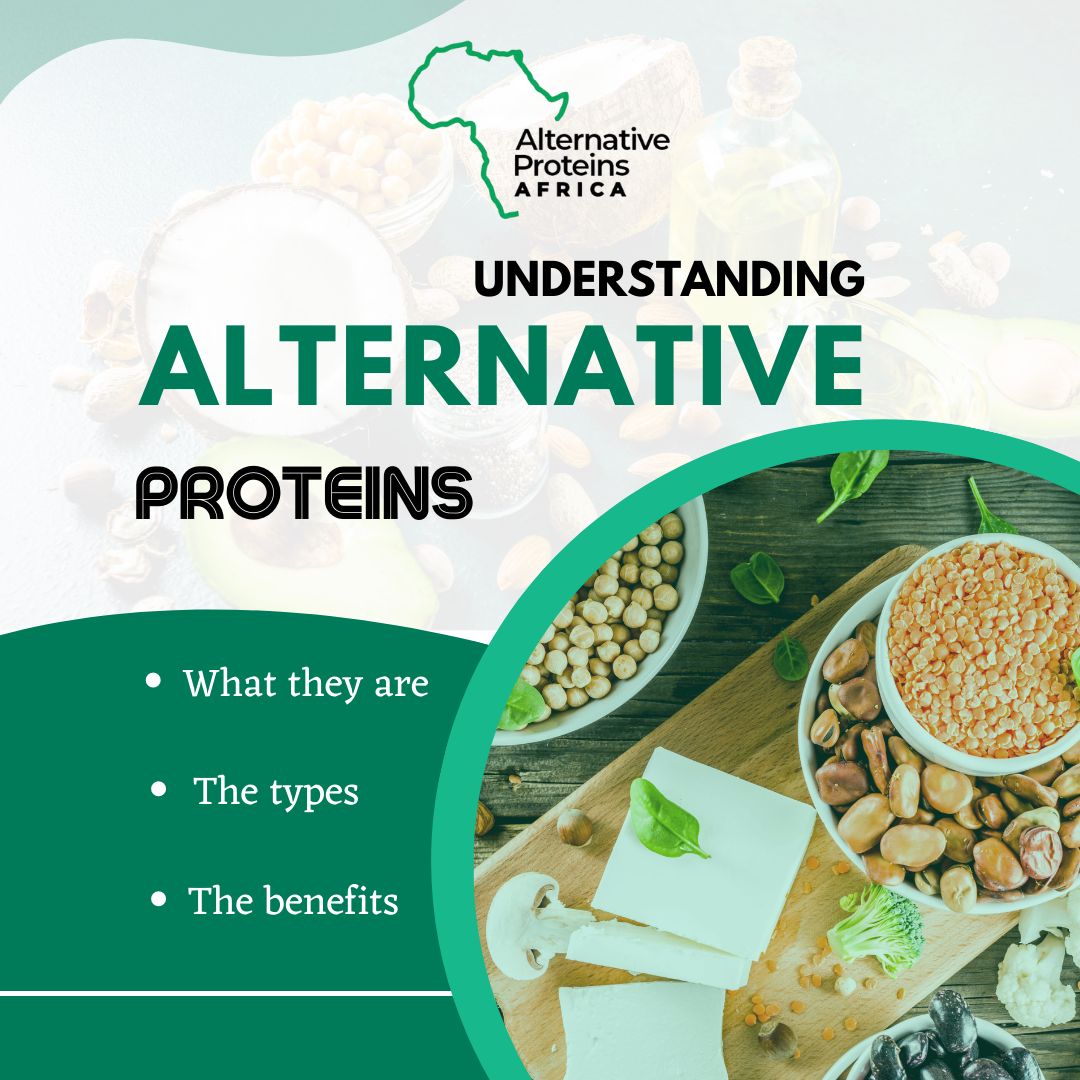
What have you heard about Proteins? Protein is an essential component of the human body cells, and it is the building block for the body tissues. It aids in the wound healing process, muscle growth and repair, amongst many other bodily functions. As a result, protein is required in the right amount in nutrition to ensure the proper functioning of the body’s different processes. It is that important to humans, as its insufficiency can lead to conditions like marasmus, kwashiorkor, and acute weight or muscle loss.
The required amount of proteins can be got from the food we eat and the two significant sources of protein are Plant and Animal. Of the two sources, the demand for animal-based proteins has vastly increased, especially in developing regions, and this has raised significant concerns globally, more so in Africa.
Understanding the “conventional” sources of protein (i.e. animal-based) can aid understanding of what alternative proteins are. Animal-based protein sources are those protein-rich products from animals that people consume. They include eggs, meat, and dairy products. Cows, goats, sheep, pigs, fish, poultry birds, and rabbits are some of the common animals exploited for protein-rich products.
Sadly, growing human populations have caused a remarkable increase and intensification of animal agriculture and production systems. This has led to poor land use, environmental pollution, high contribution to the emission of greenhouse gasses, poor treatment of animals, and even human health issues. The over-dependence on animal-sourced proteins can negatively impact human health, the environment, and causes pain and suffering for billions of animals farmed worldwide.
Have you ever considered what it takes to produce meat and other animal-sourced proteins in terms of land use? The Food and Agricultural Organization recorded that about 38% of the global land surface is used for agricultural purposes, out of which about 25% is used for livestock grazing. Our World in Data has this to say: “The same is also true for protein – it takes almost 100 times as much land to produce a gram of protein from beef or lamb, versus peas or tofu.”
These sustainability and ethical concerns, which include the need for better animal welfare, improved environmental well-being, and sustainable food production practices, have resulted in increased advocacy for non-animal-based protein sources that meet global protein needs. Thus paving the way for us to seek alternative sources of proteins termed “Alternative Proteins.” Unlike animal-based products, most alternative protein sources have been labeled “good sources of protein.”
Alternative Proteins come in three forms: plant-based, fermentation-based, and cultivated or cultured proteins. They are substitutes for traditional animal-based proteins, such as eggs, meats, and dairy products such as milk, cheese, etc.
Plant-based proteins: These are the largest contributing sources of alternative protein. You are most likely familiar with these protein sources. Examples include whole grains, legumes, nuts, vegetables, etc. They also include plant-based meat, i.e., plant-based substitutes to animal meat with almost similar appearance, flavour, taste, texture, and other qualities. With improvement, plant-based meat is gaining more acceptance.
Fermentation or fermented proteins: These come from the use of fermentation techniques in processing food. This fermentation technique has been utilized since the earliest form of civilization known to man. From yoghurt to cheese production, fermentation has been very useful. It involves using microorganisms to alter an existing food item’s nutritional content and other characteristics into a more desirable product. Of course, there are good microorganisms!
Now, instead of using these techniques on animal-source protein foods such as milk and cheese, they are being used on plant-based foods. Notable plant-based fermented foods rich in protein include tempeh, locust beans, sauerkraut, non-dairy yoghurt, etc.
Cultivated proteins, or cultured meat: These are produced through laboratory technologies and innovations to eliminate conventional animal farming and slaughter for meat production. They are also called “lab-grown” or “clean” meat. How does it sound to you? You are probably wondering if this is possible. This form of alternative proteins has the potential to offer a sustainable approach to meat production. However, cultivated meat production is at its nascent stage of development globally and therefore presents opportunities for innovative drives.
Commendably, the US Department of Agriculture recently approved the sales of cell-cultivated meat in the country, making it the second country after Singapore. This is a major leap from the Department’s position five years ago and a great step in the right direction as it opens the door for future explorations. This tells us that the future is promising for the field of Alternative Proteins! Additionally, alternative proteins offer countless benefits to the world’s food system. Africa must, therefore, tap into these benefits so that it is not left behind in reaching food security and maximizing benefits related to the judicious use of land and other resources.
Apart from the fact that alternative proteins promote efficient land use as relatively less land mass is needed to grow plant-based and produce cultured proteins, it is equally noteworthy that alternative proteins have cross-sectoral benefits that transcend the agriculture sector. It significantly impacts human health, animal welfare, and the ecosystem at large (we will look at the multi-sectoral impact of these alternative proteins in an upcoming article).
All these are indications that alternative proteins have the prospect to boost our food system by providing sustainable protein sources to meet the demand of the growing population and promote the health of humans, animals and the environment to achieve a sustainable planet that allows for the unhindered thriving of the different entities of the ecosystem.

